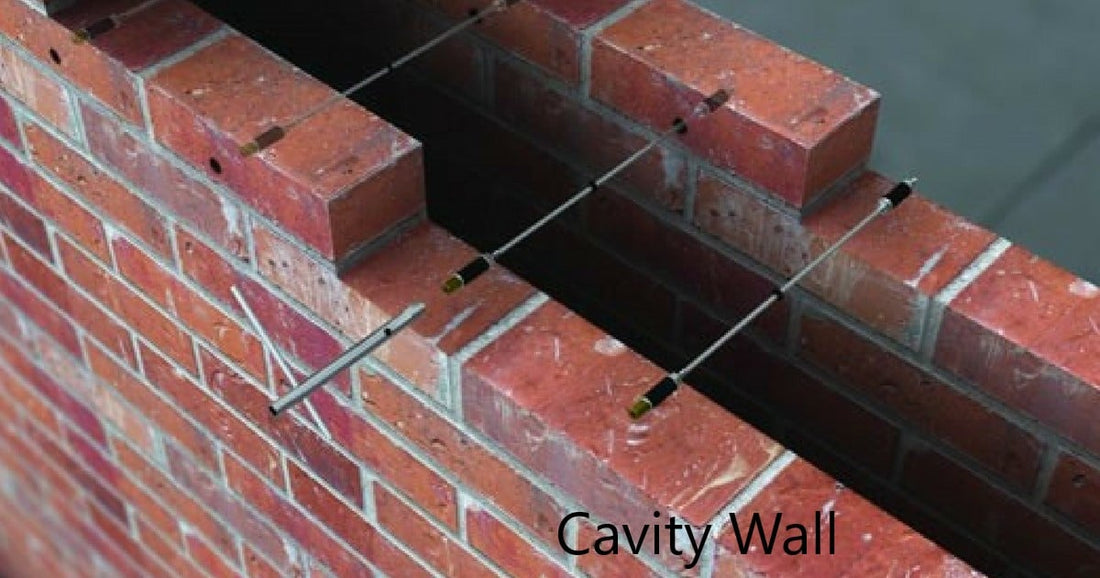A hollow wall is the construction of two walls with some space between them, rather than a single wall for a specific purpose. Different types of double walls can be observed in construction, such as: B. Brick hollow walls, block hollow walls, etc.
A cavity wall is thinner compared to normal walls because two walls are constructed with a space separated from each other. Furthermore, a cavity wall may be called a cavity wall due to the presence of a gap between the two walls.


Purpose of a Cavity Wall
Hollow walls are constructed for special purposes only. We generally build solid walls without gaps, as they are not always necessary.
The possible uses will become clear when you read the advantages and disadvantages of these types of walls.
Use as sound insulation
Loud noises can pose a major problem to the functionality of the building. For example, if we operate an office with high noise levels, employees will not be able to work freely due to the noise.
How does the noise come about?
In buildings, we often install generators to provide energy or use them as an alternative source of electricity. They are also used during power outages.
A generator makes a lot of noise when it is in operation. This is very difficult here.
Nobody likes to hear noise.
This is why we build hollow walls as sound insulation.
If there is an air gap, it is very difficult for sound to propagate when the medium changes. Furthermore, depending on the needs of the project, insulation is also used to improve the efficiency of the system.
Use as thermal insulation
There must be a medium that can transfer the heat. Creating an air gap reduces heat and has an insulating effect. Especially when we need to maintain heat, prevent heat transfer, etc., we can design cavity walls accordingly.


To avoid moisture
The hollow walls act as a barrier against the transport of moisture into the building. Avoid air spaces between walls, as it is difficult for walls to transport moisture through the air.
Economical construction
Building a solid wall to solve the problems discussed above is expensive.
To do this we need to build thick and solid walls. For example, if we want to avoid humidity, the walls must be quite thick, and can be much thicker than a normal wall.
When we build a hollow wall, there is a significant saving in material because we build the hollow walls with thinner bricks or blocks.
Cavity wall properties
Cavity wall characteristics are discussed in relation to intended uses. Furthermore, the study of relevant properties in special projects of this type is very important.
Brick hollow walls are widely used in construction. In addition, blocks are also used today in construction.
Thermal properties
The energy efficiency of a building is very important today as we try to develop sustainable projects. If we don't go to a green area, the environment will be preserved for future generations.
That's why we need to save as much energy as possible.
A hollow wall is a good option for this. Reduces thermal conductivity and reduces heat load. Additionally, it reduces the rise in heat or temperature inside a building when it is hotter outside.
The energy required to cool the building is comparatively less. Therefore, savings are achieved.
It also works in opposite directions. When it's colder outside and we need to keep heat in, a cavity wall can be the solution.
Structural capacity
Due to the thinner thickness of the individual walls, attention is paid to the structural properties of the cavity walls. However, when they are connected together, the load capacity increases.
If hollow walls are used as load-bearing walls, special attention must be paid to the bearing capacity of the wall.
The resistance of the stone/block and the engine are the factors that most affect the load capacity. They must be checked properly.
Furthermore, works must be monitored to ensure good construction quality.
Fire resistance of cavity walls
By creating an air space between two brick walls, the fire resistance of the cavity walls is improved. In general, this reduces heat transfer across the air gap.
Therefore, it has good fire resistance.
Moisture transfer resistance
As explained above, the cavity wall has good resistance to moisture transfer.
Even if one wall absorbs heat, it is not transferred to the other wall due to the distance between the walls.
The air gap significantly reduces moisture transport through the wall.
Advantages of Cavity Walls
- Hollow walls can be used as thermal insulation. They significantly reduce heat transfer.
- Greater fire resistance
- Sound resistance. Sound waves travel faster through a solid wall. A cavity wall stops them.
- Less moisture transfer or less humidity
- More economical to build than a solid wall that achieves the same properties
- Less weight and lower structural costs.
- Improves the energy efficiency of a building. When air conditioning a building, the heat transferred through the earthen walls must be taken into account. However, the cavity wall significantly reduces them.
Disadvantages of Cavity Walls
- Construction monitoring must be carried out actively.
- Qualified workers must be hired
- If mortar falls into the crack, it should be clean. If a significant amount of mortar falls, performance will be reduced.
- Engine build-up between walls increases humidity.
- A suitable insulation method must be used on openings
- Hollow walls are less rigid compared to solid walls. Structural settlement can cause cracks in walls
- To avoid the formation of cracks due to thermal effects, the necessary reinforcements must be provided.
- Concrete lintel beams where required, these can be provided.
- Wider beams need to be built.
- Problems with thermal bridges
- The air gap must be adjusted depending on the insulation requirements. Or the insulation thickness is limited to the available gap in the wall if insulation is required.

